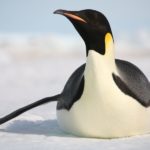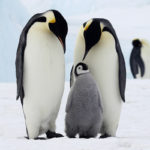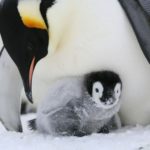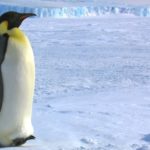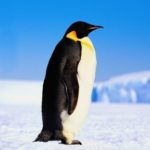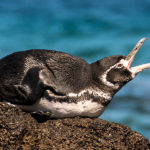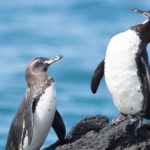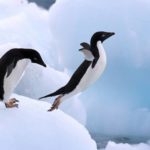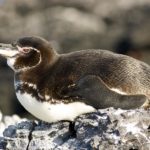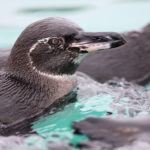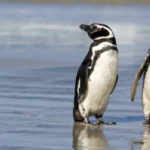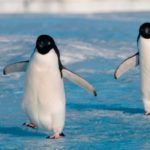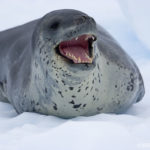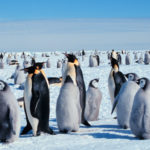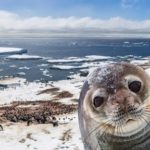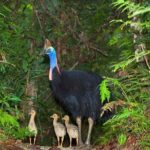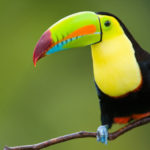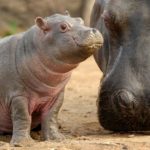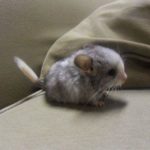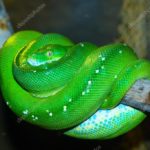Emperor penguins
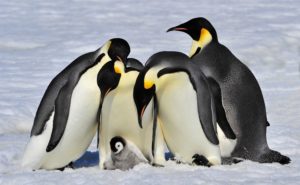 The emperor penguin is the largest of all 17 species of penguins. Thanks to dense feathering, penguins feel comfortable enough in any frost and cold. Maintain an optimal body temperature and not suffer from colds contributes to a thick layer of fat, which, in addition to the thermoregulatory function, serves as a kind of pantry, supplementing the bird’s energy balance.
The emperor penguin is the largest of all 17 species of penguins. Thanks to dense feathering, penguins feel comfortable enough in any frost and cold. Maintain an optimal body temperature and not suffer from colds contributes to a thick layer of fat, which, in addition to the thermoregulatory function, serves as a kind of pantry, supplementing the bird’s energy balance.
An important role for warming the body is played by black and white color of down. When the sun appears, black feathers actively absorb and accumulate the heat of the sun’s rays. Nature has endowed these animals with unique survival mechanisms in harsh conditions. For example, they are adapted to walk on snow and ice, leaning on their heels and tail. To keep warm, during severe frosts, the emperor penguins gather in dense groups. Clinging to each other and constantly moving, from the outer circle to the middle, they heat the air inside such a circle to +35 degrees, with an outside temperature of -20 ° C.
The main habitat for penguins is Antarctica. They live in colonies, which can number a very different number of birds. The largest colonies number up to 10 thousand penguins, small colonies unite about 300 individuals. The emperor penguin from all other species goes to the southern extremities, arranging their lives on ice floes. But for continuation and incubation of eggs, they amicably return to the mainland. According to the results of observations and studies, about 35-38 penguin colonies were recorded.
Emperor penguins, like excellent swimmers and divers, eat food for themselves only in water. Diet consists of fish, squid, krill. Animals produce food by joint efforts and, united in groups, amicably attack the school of fish, attacking its beaks. They feed small fishes in the water, but larger specimens are brought up to dispose of it.
In the sea, penguins spend about two months a year, but then have to return to continue the genus.
Emperor penguins form nesting colonies, which are located on coastal ice floes. The place for the colony is chosen by birds among the cliffs or glaciers, so that it is not blown by the winds, and nearby there are polynyas and areas with open water. Such areas are necessary for animals to quickly find food for chicks.
